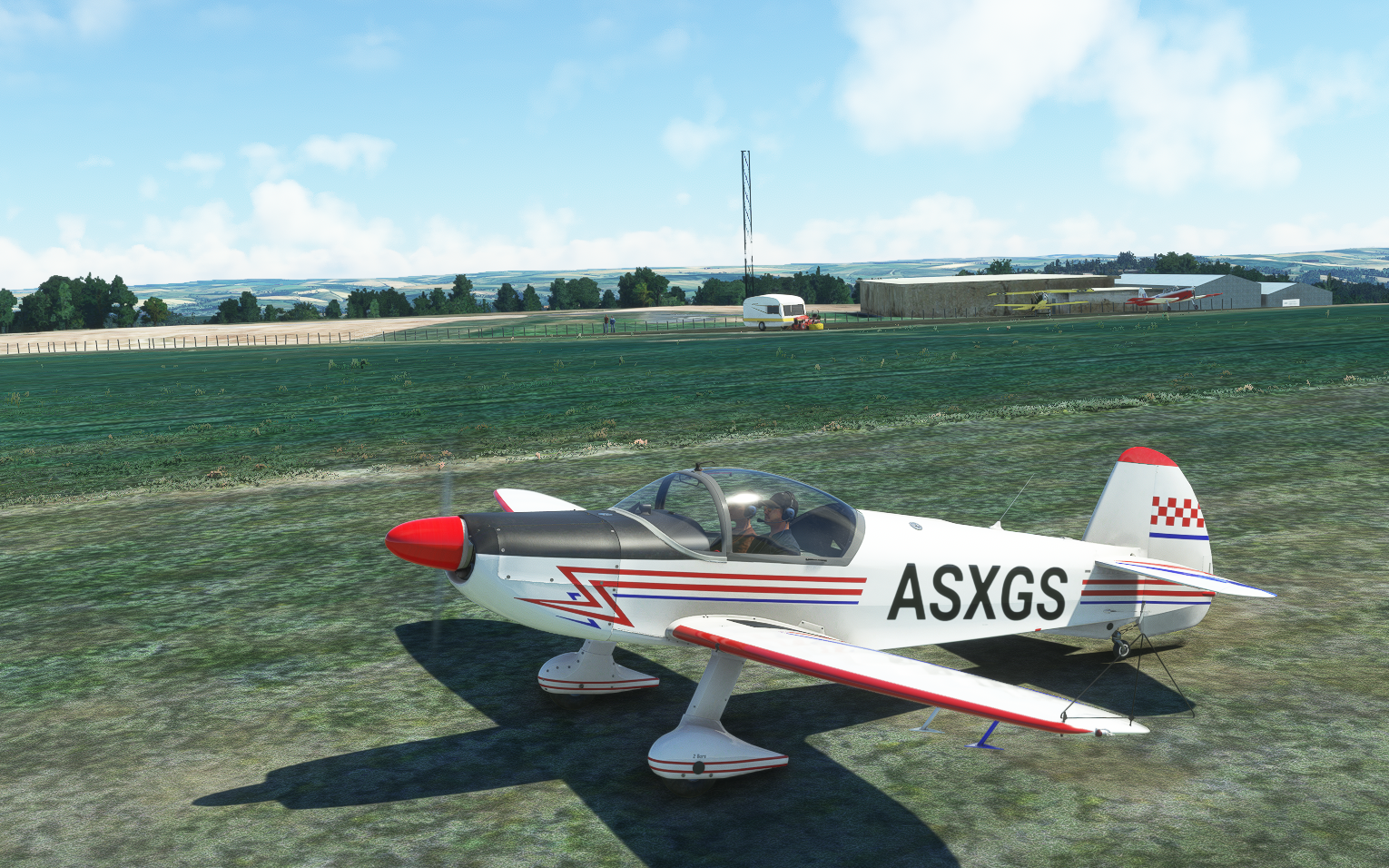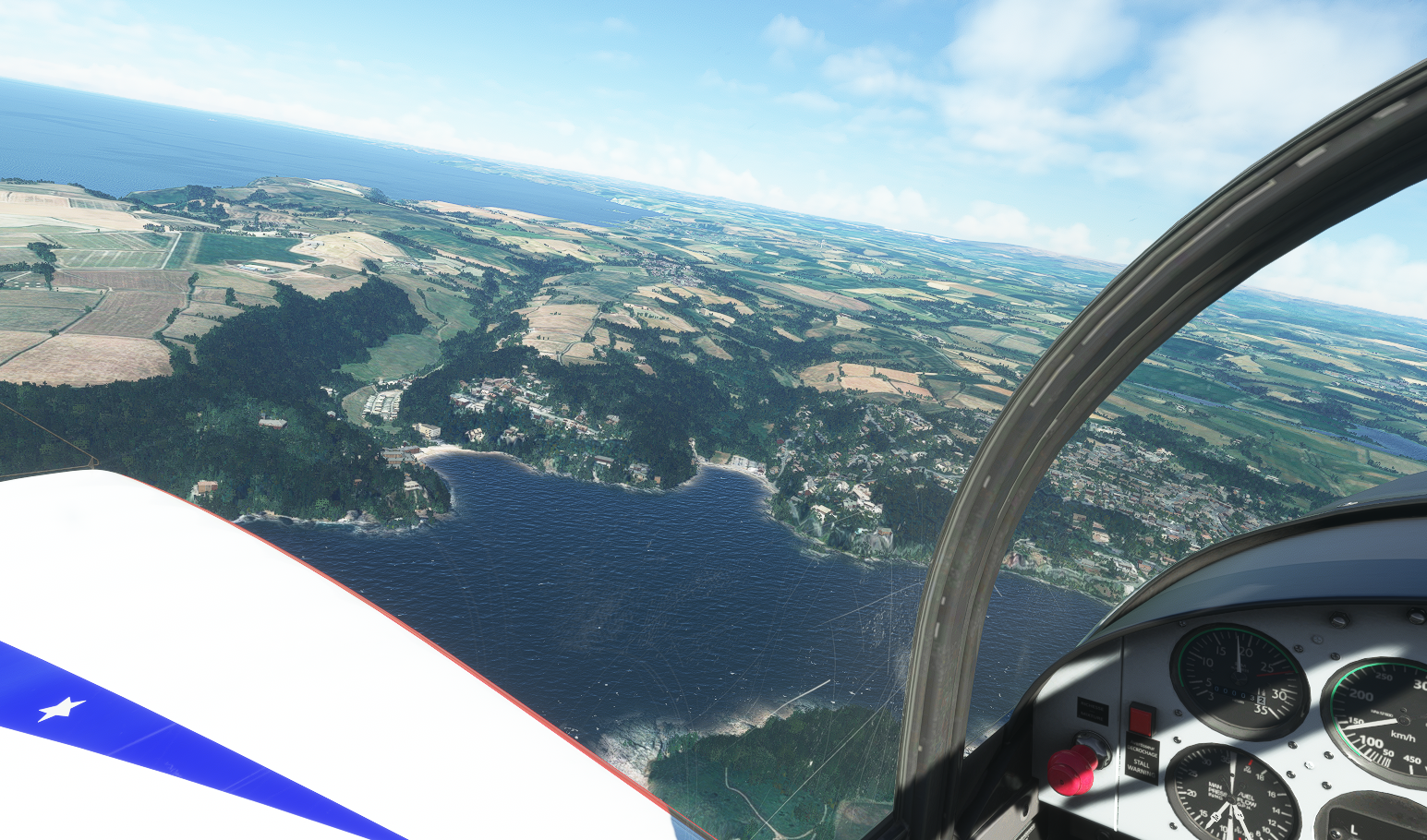Flying from Salcombe Airport (Bolt Head)
Saturday, February 19th, 2022 at Salcombe Airport (Bolt Head Airfield)
In this short jolly, I do something in the simulator that you can't do in real life - fly over Salcombe. Salcombe Airport is on the cliffs to the south of the town. North of the airfield is a no-fly zone. Otherwise known by its wartime name of Bolt Head, Salcombe Airport now has only a single grass strip.
Come along and see Salcombe.
 Open in a new tab to enlarge. |
 Open in a new tab to enlarge. |
 Open in a new tab to enlarge. |
The Airfield
Salcombe Airport is on the site of Bolt Head Airfield, a former Royal Air Force airfield close to Salcombe on the south Devon coast. It was used as a satellite for RAF Exeter from 1941 to 1945.
The Ground Control Interceptor Station (GCI) RAF Hope Cove was established on the northeast side of the field in 1941 to direct fighter operations in the English Channel. Unlike the airfield, Hope Cove remained in use into the 1990s.
Now the Airfield is operated by Bolt Head Aero Club, on behalf of the Landowners, Squire Bros.
I have two scenery upgrades for Salcombe Airport.
This video depicts Neil Birch's version, available here.
The alternative is the Superspud version, available here.
Local Landmarks
About five miles along the coast to the South West is Hope Cove. Continuing along the coast, you can find Thurlstone rock - a spectacular lump sticking out of the sea with a hole in it.
Easily visible from Thurlstone Rock is Bigbury on Sea and immediately opposite is Burgh Island and a swish Art Deco hotel. At low tide, you can walk across to the island from Bigbury.
Heading back East past Bolt Head, nestling in the Kingsbridge Estuary is Salcombe, a small town that is popular with tourists and the yachting community.
A few more miles East should bring you to the Start Point Lighthouse and north from there to see the Slapton Ley.
The Robin Cap10
The CAP 10 is a low-wing cantilever monoplane of wooden construction. It is a two-seat training aerobatic aircraft first built in 1970 and still in production in 2007.
General Characteristics
- Crew: 2
- Length: 7.16 m (23 ft 6 in)
- Wingspan: 8.06 m (26 ft 5 in)
- Height: 2.55 m (8 ft 4 in)
- Max takeoff weight: 760 kg (1,676 lb)
- Powerplant: Lycoming AEIO-360-B2F 4-cylinder air-cooled piston engine, 134 kW (180 hp)
- Propellers: 2-bladed Hoffmann fixed-pitch wooden propeller
Performance
- Maximum speed: 270 km/h (170 mph, 150 kn)
- Cruise speed: 250 km/h (160 mph, 130 kn) 75% power
- Stall speed: 100 km/h (62 mph, 54 kn) flaps up
- 85 km/h (46 kn; 53 mph) flaps down
- Never exceed speed: 340 km/h (210 mph, 180 kn)
- Range: 1,200 km (750 mi, 650 nmi)
- Service ceiling: 5,000 m (16,000 ft)
- G limits: +6 -4.5
- Rate of climb: 6 m/s (1,200 ft/min) max at sea level
Do you have narrated YouTube videos of simulator flights from Cornwall airfields? Send me a link or post it in the comments. I'll add those I like to this site.

Add new comment